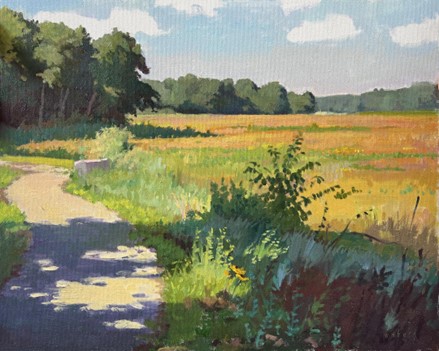Last week was Thanksgiving, which, for many Americans, conjures images of roasted turkey, mashed potatoes and Pilgrim hats. For members of this continent’s many Indigenous tribes, it is an anniversary but not necessarily a happy one. Although the Pilgrims’ landing wasn’t the first time Europeans landed in North America, it marks the moment of First Contact, when European colonists arrived in the Northeast and forever changed the trajectory of history in this region and beyond.
The Wampanoag have lived in southeastern Massachusetts (including the land that is now known as Cape Cod) for more than 12,000 years. They were the first tribe encountered by the Pilgrims when they landed in Patuxet (what is now Plymouth). 2020 marks the 400th anniversary of the Mayflower’s voyage. You can’t tell that story without the perspective of the local Native people, the Wampanoag tribe. But too often, that story has been boiled down to a myth—a simple story of flat, one-dimensional characters, feel-good themes, and a happy ending. The reality is more complicated than that.
In popular American culture, we have an image of the Pilgrims’ arriving to a new, unoccupied world just waiting for them to inhabit it. In fact, they landed in the middle of what was already a vibrant, thriving Native community. It is estimated that there were about 50,000 to 100,000 Wampanoag People living in that territory (which also included eastern Rhode Island) before the Pilgrims arrived.[1]
In 2020, we wanted to delve deeper into the history of this time period in the museum galleries. Unfortunately, Heritage’s collections do not contain any historical Wampanoag material. We also knew that this story needed to come directly from Native voices. So we were thrilled to be able to bring the traveling exhibition, “Our” Story: 400 Years of Wampanoag History to our galleries and to our visitors this past season.
A Glimpse at local Wampanoag History
This exhibition is a collaborative project, sponsored by Plymouth 400, Inc. and spearheaded by the creative team at SmokeSygnals, a Native-run marketing firm based in Mashpee, Massachusetts. It has been several years in the making, with seven chapters overall that cover facets of Native life and governance as well as specific moments in Wampanoag history.
Steven Peters (Wampanoag) is the creative director of SmokeSygnals and one of the lead creators of this exhibition. For many years now, he and his team have been devoted to
bringing the Native experience to the public. It was a pleasure to work with Steven and we are hopeful that we can continue this collaboration in the future.
Given our space limitations, we couldn’t bring all seven chapters, so we chose to focus on the story of Tisquantum (or Squanto, as he is commonly known), Epanow, and other Wampanoag people who were taken as slaves and the time period just before the Pilgrims arrived.
Many people know Tisquantum from the Thanksgiving story. He was one of the first Wampanoag to interact with the Pilgrims. He spoke English. What is not as widely known is that the reason he could speak English and was familiar with the ways of the English was because he was one of 20 men forcibly taken by British explorers to be sold into slavery. Tisquantum was able to eventually make his way back to Patuxet, only to find his village deserted and his family killed by a plague.
National Day of Mourning
While “Our” Story begins with First Contact, it ends with a chapter about the National Day of Mourning. In 1970, on the 350th anniversary of the Mayflower voyage, Frank James (Wamsutta) of the Aquinnah Wampanoag Tribe was asked to speak at a Commonwealth of Massachusetts banquet honoring the Pilgrims. After reading James’ speech ahead of time, the organizers refused to let him speak saying “…the theme of the anniversary celebration is brotherhood and anything inflammatory would have been out of place.”
James made his speech anyways (click here to read the complete speech), on Thanksgiving Day, at the statue of Massasoit on Cole’s Hill in Plymouth. His action sparked a tradition in the American Indian Movement. Tribes now observe a National Day of Mourning instead of the Thanksgiving holiday.
Want to learn more?
- The United American Indians of New England has information about the history of the National Day of Mourning, ways that non-Native people can show their support and ways that you can watch the event virtually this year.
- There’s a new exhibition, Our Story: The Early Days of the Wampanoag Tribe and the Pilgrims Who Followed, devoted to Wampanoag history at the Pilgrim Monument & Provincetown Museum in Provincetown. Read about it here and here.
- The Wampanoag were not the only tribe in the Northeast. To learn more about Native tribes and life in other parts of New England, start with the Tomaquag Museum in Rhode Island or the Mashantucket Pequot Museum & Research Center (closed until 2021 due to COVID-19 but definitely worth a visit when it reopens!) in Connecticut.
[1] According to www.plimoth.org. This number is before The Great Dying (1616-1618), a plague which devastated the Wampanoag population and resulted in thousands of deaths.








